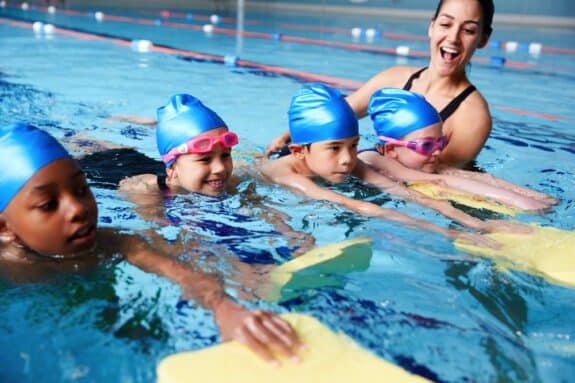As summer arrives and pools begin to open, ensuring your family’s safety around water is crucial. Despite ongoing efforts, an average of 11 people tragically drown each day in the United States. Many more are affected by the trauma of nonfatal drowning incidents. Alarmingly, drowning deaths have been on the rise in recent years.
From 2020 to 2022, over 4,500 people drowned annually in the United States, which is about 500 more deaths each year compared to 2019. The increase was particularly significant among high-risk groups, including young children, older adults, and Black individuals of all ages.
Key Statistics and Trends:
- Children Ages 1–4: Drowning is the leading cause of death for children in this age group. In 2022, drowning incidents increased by 28% compared to 2019.
- Adults 65 and Older: This age group has the second-highest drowning rates, with a 19% increase among those aged 65–74 in 2022 compared to 2019.
Drowning Rates by Race and Ethnicity:
- American Indian or Alaska Native (AIAN): AIAN people have the highest drowning rates, though these rates did not increase from 2020 to 2022, they remain higher than other groups.
- Black Individuals: Black people have the second-highest drowning rates. In 2021, there was a 28% increase in drowning incidents among Black people compared to 2019.
The Importance of Swimming Skills
A startling 40 million adults in the United States do not know how to swim. Basic swimming and water safety skills are proven, effective methods to prevent drowning. However, access to swimming lessons varies widely, impacting those at higher risk.
- Black Adults: More than 1 in 3 (37%) Black adults reported not knowing how to swim, compared to 15% of all adults. Additionally, about 2 in 3 (63%) Black adults have never taken a swimming lesson.
- Hispanic Adults: Approximately 3 in 4 (72%) Hispanic adults reported never taking a swimming lesson.
Barriers to Access
Several barriers contribute to the disparities in swimming skills, including the cost of lessons and availability in certain communities. Social and cultural factors can also influence participation in swimming programs. Everyone needs to have access to basic swimming and water safety training.
Taking Action
The U.S. National Water Safety Action Plan provides a framework for states and local communities to implement strategies to prevent drowning. The plan emphasizes the importance of:
- Increasing Access to Swimming Lessons: Ensuring that swimming programs are affordable and accessible to all communities.
- Community-Specific Programs: Tailoring swimming lessons to meet the needs of diverse communities.
Stay Safe This Summer
As you and your family enjoy the summer pool season, remember the importance of water safety. Consider enrolling in swimming lessons and always supervise children around water. Together, we can work towards reducing drowning incidents and making our communities safer.
For more information on water safety and available resources, visit the U.S. National Water Safety Action Plan website. Stay safe and enjoy a fun-filled summer by the pool!
Related Articles:







